After returning to India with a new 45-day (3 month) visa, our priority was to make sure the motorbike was in good running order to be able to continue on our trip around India. Our first few days in Hyderabad (where we had kept the bike for a month while we were in Malaysia) were spent tending to the bike and getting our fill of Hyderabadi Biryani before setting off on our longest trip on the road so far, almost 400 kms, Hyderabad (Andhra Pradesh) to Hampi (Karnataka).
The roads were much better than we had expected, and Rick had spent days researching the best route for us to take so we ended up making good time. The cold morning was a shock to the system and we were not prepared for it to be freezing. We practically had to put on every item of warm clothing we had and peeled off the layers as we went along.

Our first stop for a chai (but still feeling cold) just after Mahbunagar, Andhra Pradesh.

Our last break just before Gangawati, Karnataka.
We arrived in Hampi Island at around 5pm, after a good 10 hours on the bike, which rode like a charm, the smoothest so far, according to Rick. We had chosen to stay on Hampi Island (on the opposite side of the Tungabhadra river from busy Hampi Bazaar and the main UNESCO World Heritage Site of Vijayanagara) as it was less congested and found a group of guesthouses situated in the middle of paddy fields, and surrounded by boulder rock hills. By coincidence, Bobby “One Love” Guesthouse (where we finally settled) was run by a Maltese guy and had many Maltese travelers staying there. It was nice (and slightly strange) to hear Maltese being spoken daily, something i have not heard for a long time, and made me think of my mother, who was also Maltese.

Bobby “One Love” Guesthouse on Hampi Island.
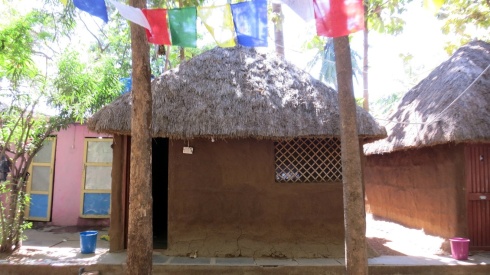
Our mud hut at Bobby “One Love” Guesthouse.
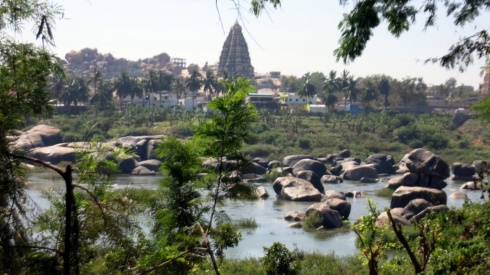
The view across the Tungabhadra river from Bobby “One Love” Guesthouse.
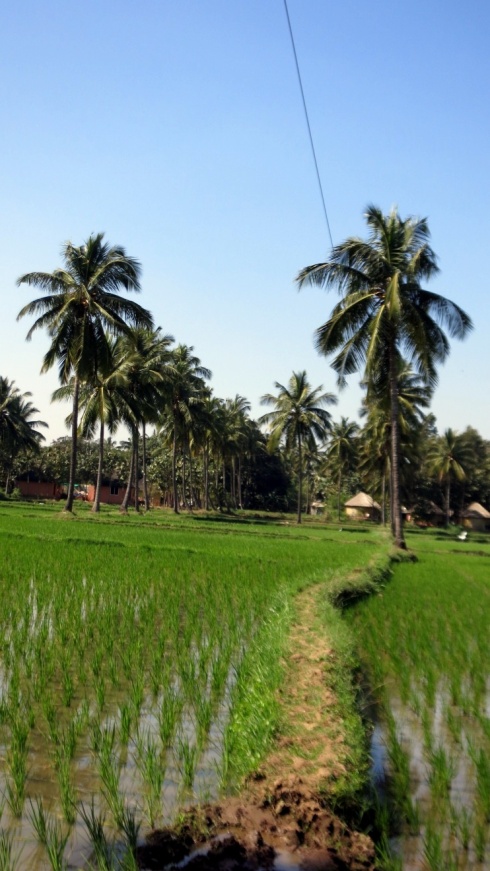
The paddy fields just next to the guesthouse.
We spent 5 nights in Hampi, exploring the area and enjoying the landscape, which reminded us of one of our favourite underwater dive-sites in Malaysia, Terumbu Tiga, off Perhentian Besar Island in Malaysia, with its huge granite boulders. The ruins of the Vijayanagara capital were visible everywhere, some still in remarkably good condition, dating from the 9th to the 14th Century.The local villagers had just started planting rice so most of the fields were flooded, which made the views even more beautiful.

A view from above, flooded paddy fields, surrounded by boulder rocks on Hampi Island.
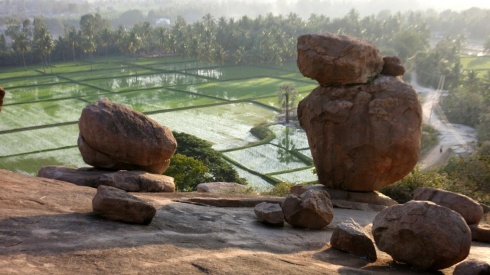
More typical scenery around Hampi.
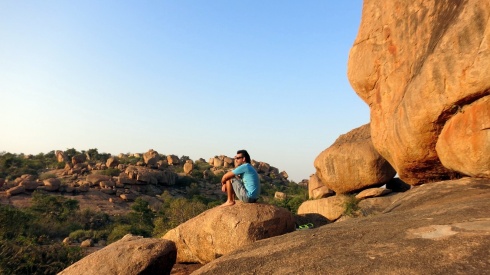
Enjoying the views at sunset.
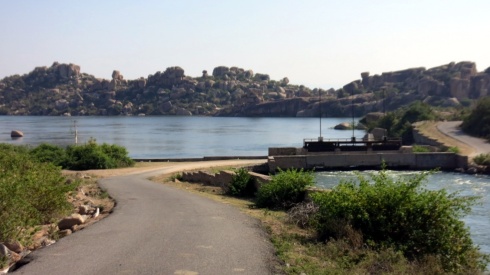
The dam and lake on Hampi Island.
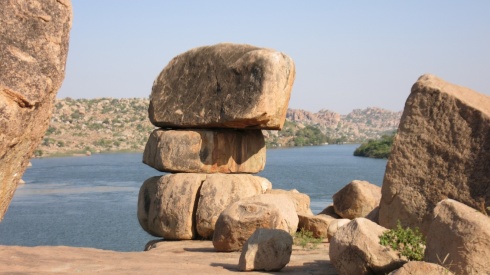
Unique rock formations near the lake.

Goats taking a rest near a traditional boat.
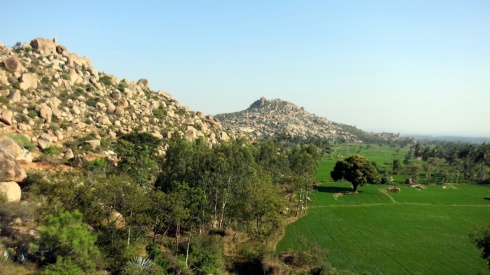
More beautiful landscape around Hampi Island.

The fast flowing part of the river.
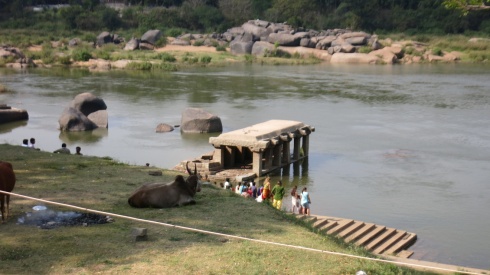
The ferry crossing for pedestrians and small motorbikes.
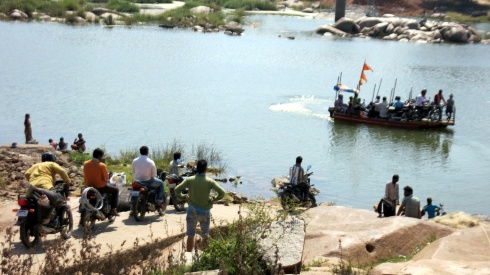
Ferrying passengers and motorbikes over the river.
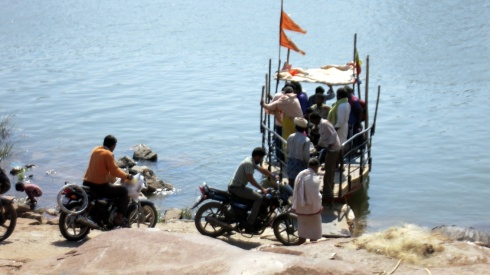
Maneuvering the motorbikes onto the tiny ferry.
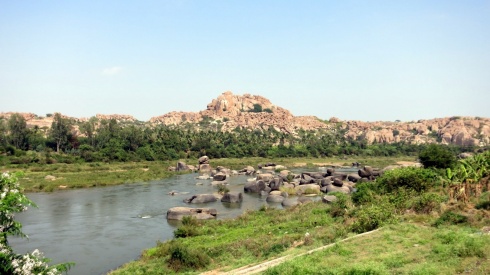
The view from the other side of the Tungabhadra river
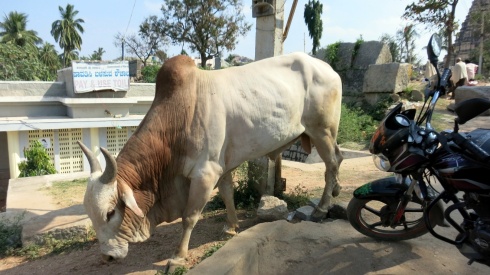
A massive bull in Hampi Bazaar.

A group of temples.

Ruins and boulders stand side by side.
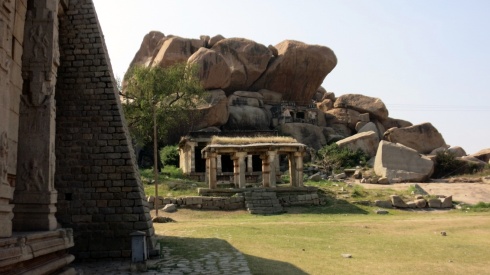
More ruins amongst the boulders.
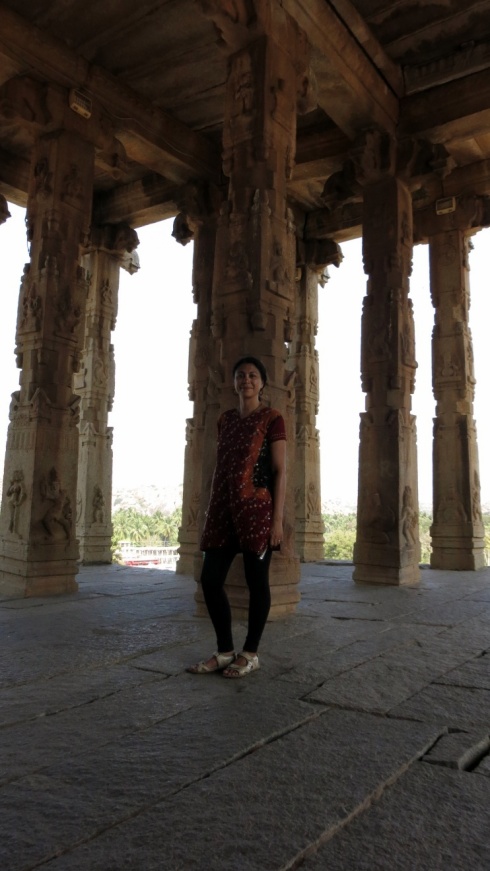
Carved pillars in one of the ruins.
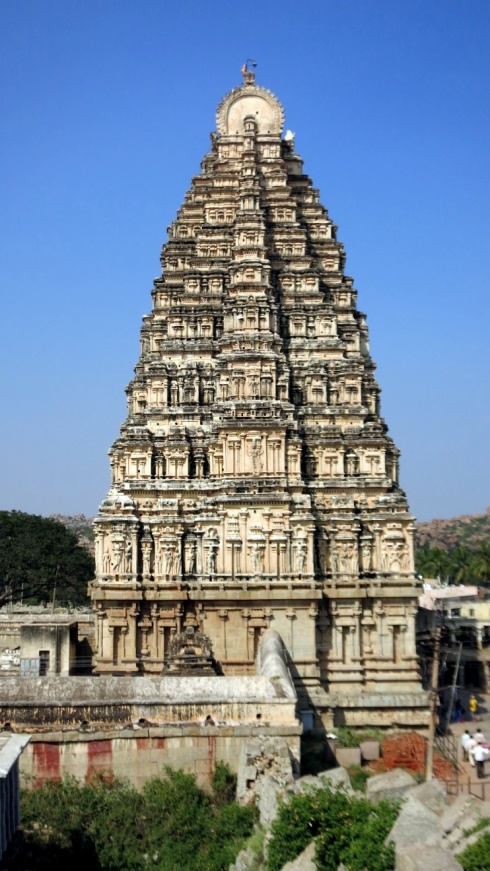
One of the many intricately-carved temples in Hampi.
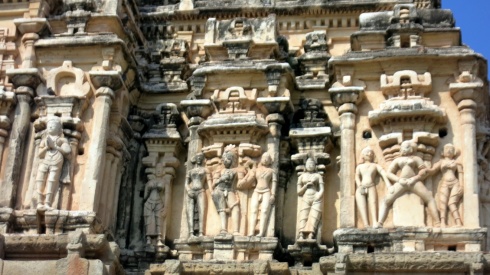
Erotic carvings adorning one of the temples.

Spell check please!
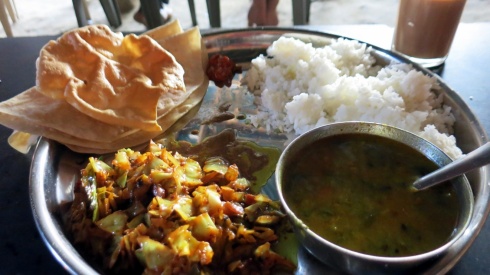
South Indian goodness on a plate. Delicious!
We were in Hampi during the festival of Sankranti, which saw many local tourists flood the area, causing massive traffic congestion on the small village roads. In the nearby fortified town of Anegundi, the houses had beautiful Kolams on their doorsteps to usher in this harvest festival.
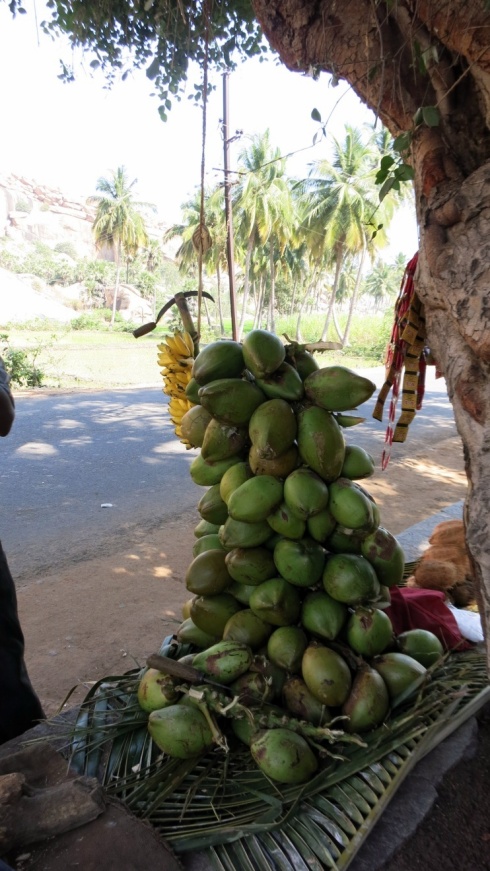
Refreshing coconut water and bananas at the side of the road.
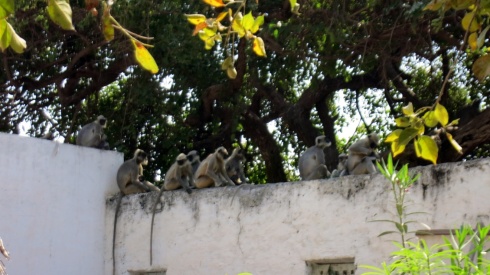
A troop of monkeys in Anegundi.
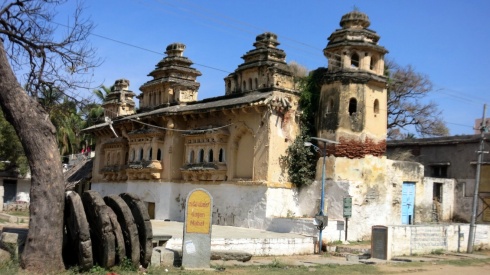
Ancient ruins in Anegundi.
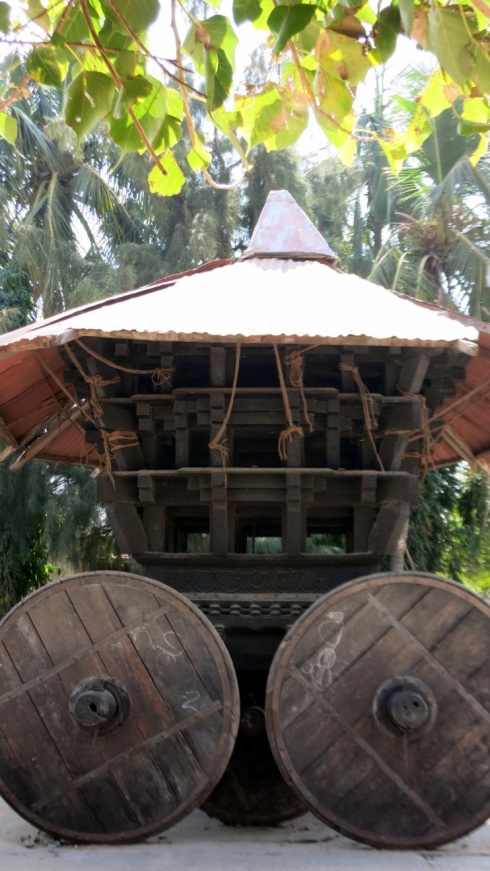
A massive wooden chariot in Anegundi.
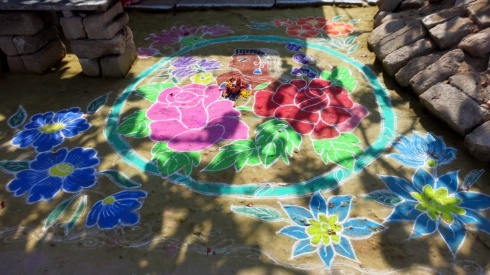
A beautiful Kolam outside a house in Anegundi during the Sankranti festival.

Traffic congestion during the Sankranti festival.
When the time came to get going, we said goodbye to Hampi, and loaded up the motorbike for the next stage of our journey and headed to the west coast of India.
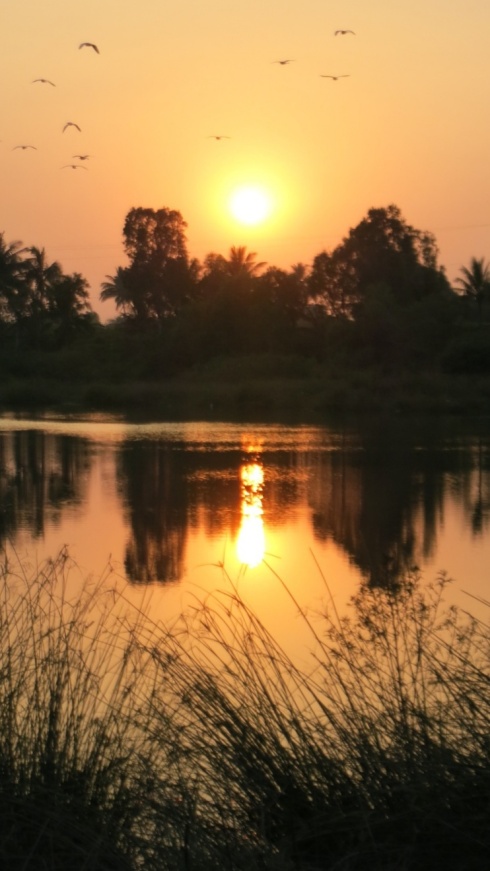
Sunset on Hampi Island.







































































